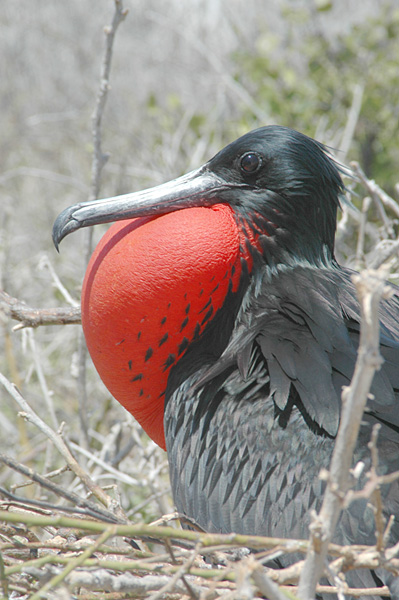Facts About Frigatebird
Frigatebirds, belonging to the Fregatidae family, are captivating seabirds that flourish in tropical and subtropical oceans. There are five extant species, all classified under the genus Fregata. These birds are renowned for their striking black plumage, elongated tails, and distinctive hooked bills. One of their most remarkable attributes is the red gular pouch found in males, which they inflate to attract females during courtship.
What truly distinguishes frigatebirds is their extraordinary ability to soar. They boast the largest wing area to body weight ratio of any bird, enabling them to glide effortlessly on wind currents for hours. Their diet primarily consists of fish and squid, but they are infamous for stealing food from other seabirds.
Frigatebirds are seasonally monogamous and typically nest in colonies on remote islands, breeding every other year. They share a close evolutionary relationship with the Suloidea group, which includes cormorants, darters, gannets, and boobies. Fossil records indicate that frigatebirds have existed for about 50 million years.
Initially, frigatebirds were classified alongside other seabirds such as cormorants and pelicans. However, genetic research has revealed that they are more closely related to the Suloidea group. These birds are known for their elaborate courtship rituals and extended periods of parental care. Their bones are pneumatic, meaning they are filled with air, which aids in their efficient flight.
Frigatebirds spend the majority of their time foraging over tropical oceans and rarely land on water. They possess unique adaptations to prevent overheating and can even sleep while flying. Unfortunately, these remarkable birds face threats from habitat loss, pollution, and overfishing. Some species are endangered due to human activities.
Culturally, frigatebirds hold significance in various Pacific communities and even appear on some national flags. Despite the challenges they face, frigatebirds remain a captivating subject of study due to their unique adaptations, behaviors, and ecological importance.

 Colombia
Colombia